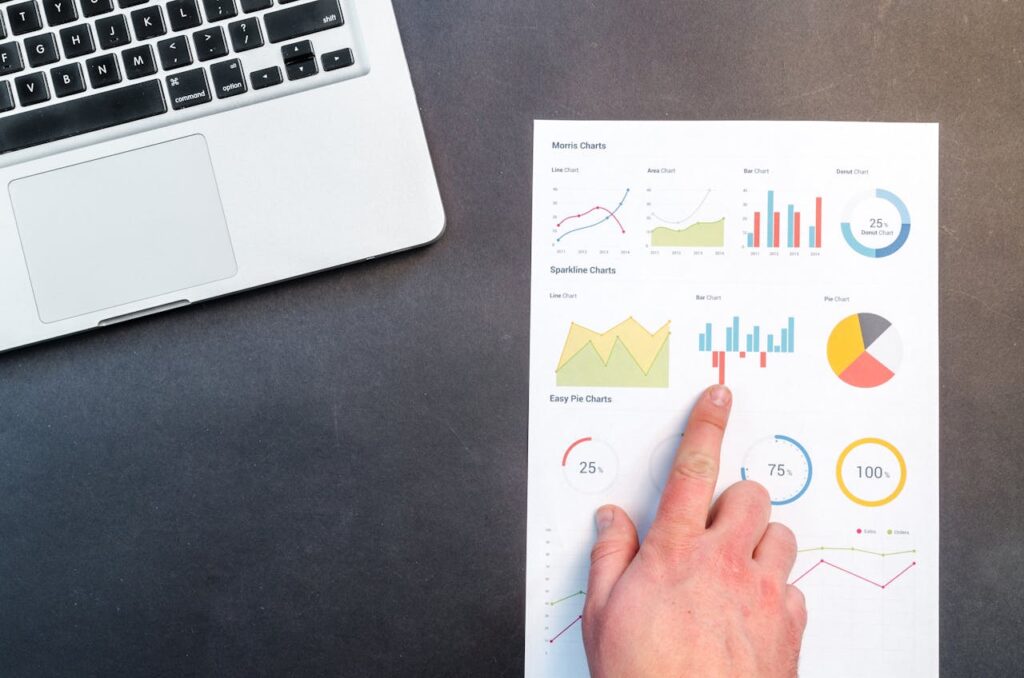Throwing in some graphs, charts, and tables can level up your research game when you’re writing an Extended Essay. Honestly, visuals make it easier to get complex data and help you share your findings in a way that clicks with everyone. From what I’ve seen helping IB students, using visuals amps up understanding and makes you look super pro in front of your IB examiners.
Why Use Graphs, Charts, and Tables in Your EE?
Adding graphs, charts, and tables to your Extended Essay isn’t just a way to make it longer. I believe these parts are critical for adequately showing your study. Visual tools help show data clearly and quickly, according to IB guidelines. Readers can understand your results more rapidly without reading through paragraphs of text. From what I’ve seen, a well-placed table or a simple line graph can make a prominent part of your writing that would otherwise be hard to understand.
These pictures are even more robust because they can back up and strengthen your case. As an example, tables in your EE can reduce large amounts of number data into a clear overview that doesn’t confuse the reader. In the same way, graphs and charts in an Extended Essay show patterns, connections, and contrasts that are hard to explain with words alone.
Now, let me talk about some of the best reasons to use images in your EE:
- Easy to use a lot of data. Visuals break down hard-to-understand information so viewers can follow your research more efficiently.
- Backs up your argument. Tables and charts show proof in an easy-to-understand way, which supports your ideas.
- It makes it easier to read. A well-organized picture can break up a lot of text naturally, which will help your essay move better.
- How you look professionally. Visuals make your EE look more professional and formal, which evaluators like.
- Interested the reader. Standout graphs and tables can make your writing more interesting and easily remembered.
In subjects like Economics, graphs can show changes in supply and demand or market balance. This makes complicated ideas easier to understand.
Where to Use Graphs, Charts, and Tables?
Based on my experience, not all EE subjects need to use a lot of graphs and tables. However, some topics just work better with pictures. The IB program has several EE subjects in which visuals work well.
Economics
This may be the IB subject with the most pictures. I believe it’s nearly impossible to write a good Economics EE without using cost-benefit tables, supply and demand graphs, or economic models.
Geography
Geography often involves looking at physical data, population trends, or environmental changes. Without maps, charts, and graphs, you can’t show how these things connect over time and place.
Biology
Graphs and tables are must-haves for showing testing data, such as lab work outcomes. Bar graphs and scatter plots often show how related growth rates and natural conditions are.
Physics
As you know, Physics EE is based on how actual data is presented. Tables and graphs help show how physical numbers, like speed, acceleration, force, and so on, are related to this subject.

Environmental Systems and Societies
Visualizations are very helpful for subjects based on data, like Environmental Systems and Societies. For example, a pie chart can show how species are distributed, and a table can compare CO2 levels over time.
Learn how Extended Essays build research and critical thinking skills across the IB continuum, from the MYP Personal Project to the DP.
What Are the Types of Visuals to Include in Your EE?
From what I’ve seen, adding images is not enough — you need to use the right ones for the task. Your images’ value will depend on how well they match your information. It is crucial to think about what you want to say and pick images that make your facts simpler, not more challenging, to understand.
Graphs – Best Practices for Data Presentation
When analyzing data in EE, graphs are great for showing how two things are related. People often choose bar graphs, line graphs, and pie charts, but each has its purpose. For instance, line graphs show changes over time, while bar graphs are better for comparing data types.
A graph should always be clear and straightforward, with no extraneous data points or patterns that are too hard to understand. I’ve found that less is often more when making graphs that are easy to use.
Here is a quick list of times to use different kinds of graphs:
- Line graphs. This is a great way to show changes over time, like how the population or temperature changes.
- Bar graphs. It’s great for comparing different groups, like age groups or areas.
- Pie charts. This option helps show parts or amounts of a whole, like how resources are shared.
If you include graphs in your EE, examiners will find it much easier to understand trends and connections in your data. Remember to keep things simple and not add too many unnecessary things to the graph.
Charts – Structure Information for Clarity
Flowcharts or organizational charts can be very helpful when setting up processes or levels. For example, if you’re writing an EE in Geography or Economics, a flowchart can help you show how essential ideas or steps in a process are connected. One of the best things about charts is that they make complex systems or processes more accessible to understand and picture. This can help when your EE wants you to explain how one step leads to the next or how different things are linked.
In an Economics EE, for instance, a diagram can show how money moves between different parts of the economy. In a Geography EE, it could be used to make a picture of how weathering works or how tectonic plates move. Ensure that every part of the chart is named correctly and clearly so the reader can easily follow the data. Charts shouldn’t be used instead of writing; they should go with it.
Tables – Organize Data for Quick Reference
Tables, in particular, are often taken for granted. I believe tables are one of the best ways to quickly show a lot of number or category data with a clear layout. From what I’ve seen, tables in your EE can show facts that would be hard to explain in words. For example, let’s say you have a set of numbers showing how different countries’ GDP changed over ten years. Writing in sentences would be too much, but a well-organized table makes finding the most critical numbers easy.
Tables can be helpful when working with many factors at once. If you’re experimenting with Biology or Physics, for example, a table can clearly show your results by showing factors, controls, and outputs in a way that is easy to read.
But remember that tables, like graphs and charts, should always be used for something. You should only use a table if it makes things more straightforward or helps organize the information better than text alone could.
For me, tables in EE are most valuable when these things happen:
- Comparing multiple categories or variables (e.g., countries’ GDP, experimental results).
- Listing data in chronological order (e.g., timeline of events, measurements over time).
- Providing a clear breakdown of complex figures (e.g., costs, quantities, frequencies).
Using tables in your EE is a great way to make data more accessible and understandable, especially when discussing numbers or extensive, complicated information.
What Are the Common Mistakes with Visuals in Your EE?
Visuals can help your Extended Essay, but if you use them wrong, they can fail. When IB students use graphs, charts, and tables, they should be careful not to make a few common mistakes.
Putting Too Many Visuals on Your EE
It’s easy to add too many pictures to your Extended Essay. You don’t have to display your data just because you have it. Don’t use too many images, and ensure each one is useful. From what I’ve seen, one good figure can often do the job of several average ones.
Visuals of Poor Quality
In scholarly writing, there’s nothing worse than a graph or table that is hard to read. Make sure your images are always of good quality, no matter if you use Excel, Google Sheets, or more complicated tools like Tableau to make them. Images with low quality can ruin an otherwise excellent article.
Lack of Accuracy in Data Presentation
Another common mistake is using graphs or maps that incorrectly show the primary sources’ data. One way to make trends look worse is to change the size of a graph. Always review your images twice to ensure they show your results correctly. As far as I know, precision is very important when showing facts.
Don’t let the stress of the IB curriculum hold you back.
Are you having trouble coming up with topic suggestions for your IB Extended Essay? Or do you need help with Internal Assessment?
Our experienced writers can help you choose the perfect topic and assist you with any assignment.
You can order an Extended Essay tailored to your specific subject and requirements.
Our experienced IB writers are always ready to help.
Simply click:

The Bottom Line
Adding graphs, charts, and tables to your EE can improve your study and presentation, but only if you know how to use them right. I believe that images can be beneficial if they are used carefully. They should always support your writing case and never take away from it. Balance is important. Use pictures to help people understand, not take away from your writing.
So, pick the right visual for your data, keep all your images consistent, and prioritize quality presentation. Following these rules helps your Extended Essay look clean and professional and ensures that you meet the IB requirements.
Our IB Writing Service can help students who want to get the best grades on their IB papers, so contact us if you need assistance.

